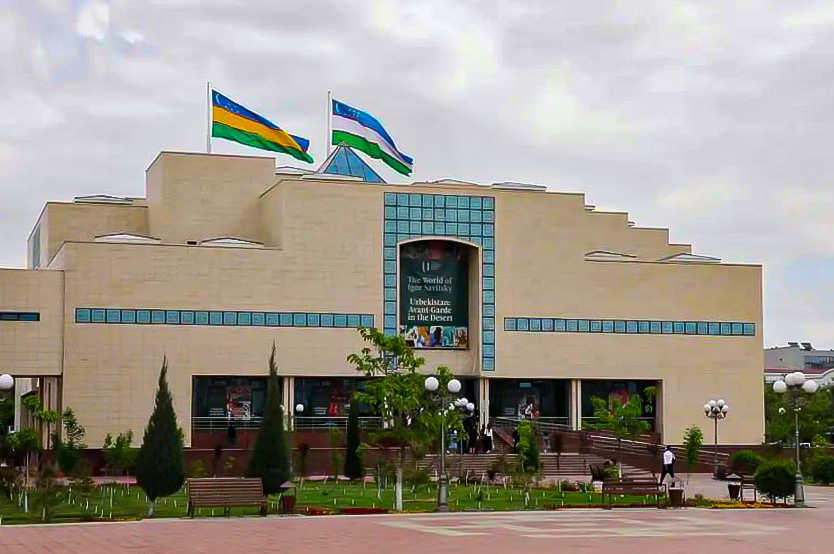
The State Museum of Arts of the Republic of Karakalpakstan named after I.V. Savitsky is one of the largest museums in Uzbekistan. The museum's collection is recognized as the second most significant and extensive collection of Russian avant-garde art in the world, as well as the best art collection in the Asian region.
The museum was founded in 1966 by the remarkable scientist, ethnographer, and artist Igor Vitalievich Savitsky.
 The history of the museum's creation and development is as unique as its collection. The collection of the State Museum of Arts of the Republic of Karakalpakstan named after I.V. Savitsky was assembled in an unprecedentedly short period. In just a few years, Savitsky managed to gather one of the most comprehensive collections of Russian and Turkmen avant-garde visual art, one of the most significant collections of decorative and applied arts of Karakalpakstan, and a unique collection of archaeological artifacts from ancient Khorezm. Such a fact has no analogue in the history of global museum collecting practices.
The history of the museum's creation and development is as unique as its collection. The collection of the State Museum of Arts of the Republic of Karakalpakstan named after I.V. Savitsky was assembled in an unprecedentedly short period. In just a few years, Savitsky managed to gather one of the most comprehensive collections of Russian and Turkmen avant-garde visual art, one of the most significant collections of decorative and applied arts of Karakalpakstan, and a unique collection of archaeological artifacts from ancient Khorezm. Such a fact has no analogue in the history of global museum collecting practices.
After the death of I.V. Savitsky in 1984, his name was bestowed upon the museum. Since 1991, the museum has been granted the first international category, placing it alongside the Tretyakov Gallery, the Russian Museum, and the Hermitage.
The modern collection of the State Museum of Arts of the Republic of Karakalpakstan named after Igor Savitsky contains over 100,000 works of art. It serves as a treasure trove that provides insight into a cultural span beginning from the 3rd century BC, featuring items of material and artistic culture from ancient and medieval Khorezm, including archaeological finds from Toprak-kala, Tok-kala, Mizdakhkhan, and others. The collection includes Zoroastrian terracotta figurines of Anahita, the goddess of fertility, ossuaries used for burying the remains of deceased fire-worshippers, and a bronze pin in the shape of a hand holding an apple, as well as lamps made of bronze.
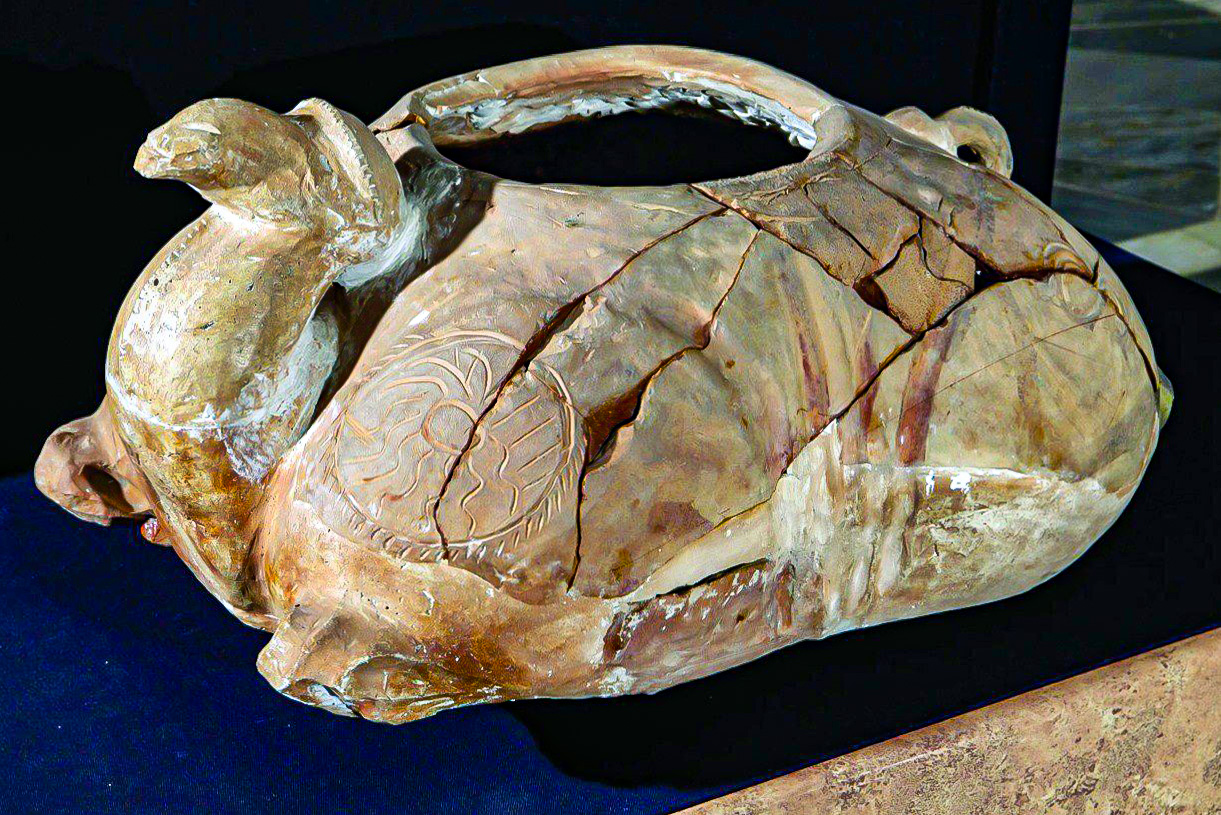 It also features a collection of ceramics, including grain storage hums, pitchers, and other items dated to the 12th–13th centuries.
It also features a collection of ceramics, including grain storage hums, pitchers, and other items dated to the 12th–13th centuries.
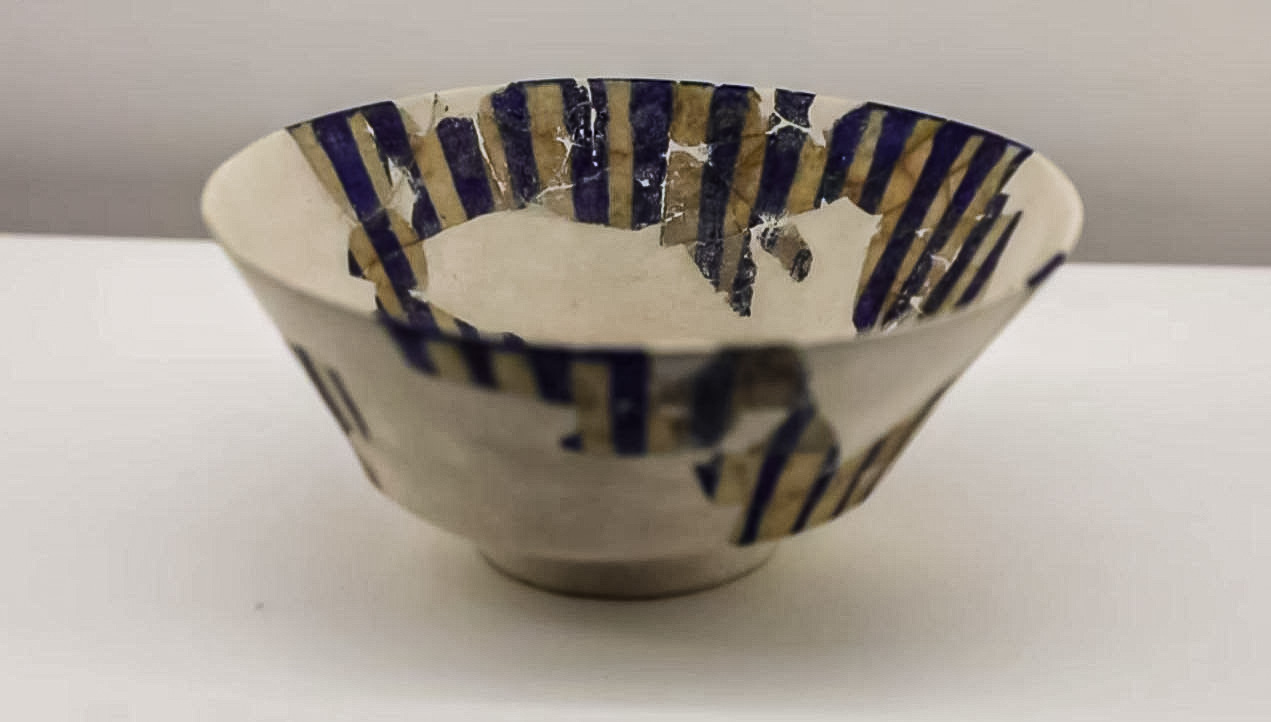 Most of the decorative and applied arts of Karakalpakstan date from the second half of the 19th century to the early 20th century. Among these items are wooden and leather artifacts used by nomadic peoples in their travels, such as silver-decorated saddles, containers for dishes, and carved doors for yurts.
Most of the decorative and applied arts of Karakalpakstan date from the second half of the 19th century to the early 20th century. Among these items are wooden and leather artifacts used by nomadic peoples in their travels, such as silver-decorated saddles, containers for dishes, and carved doors for yurts.
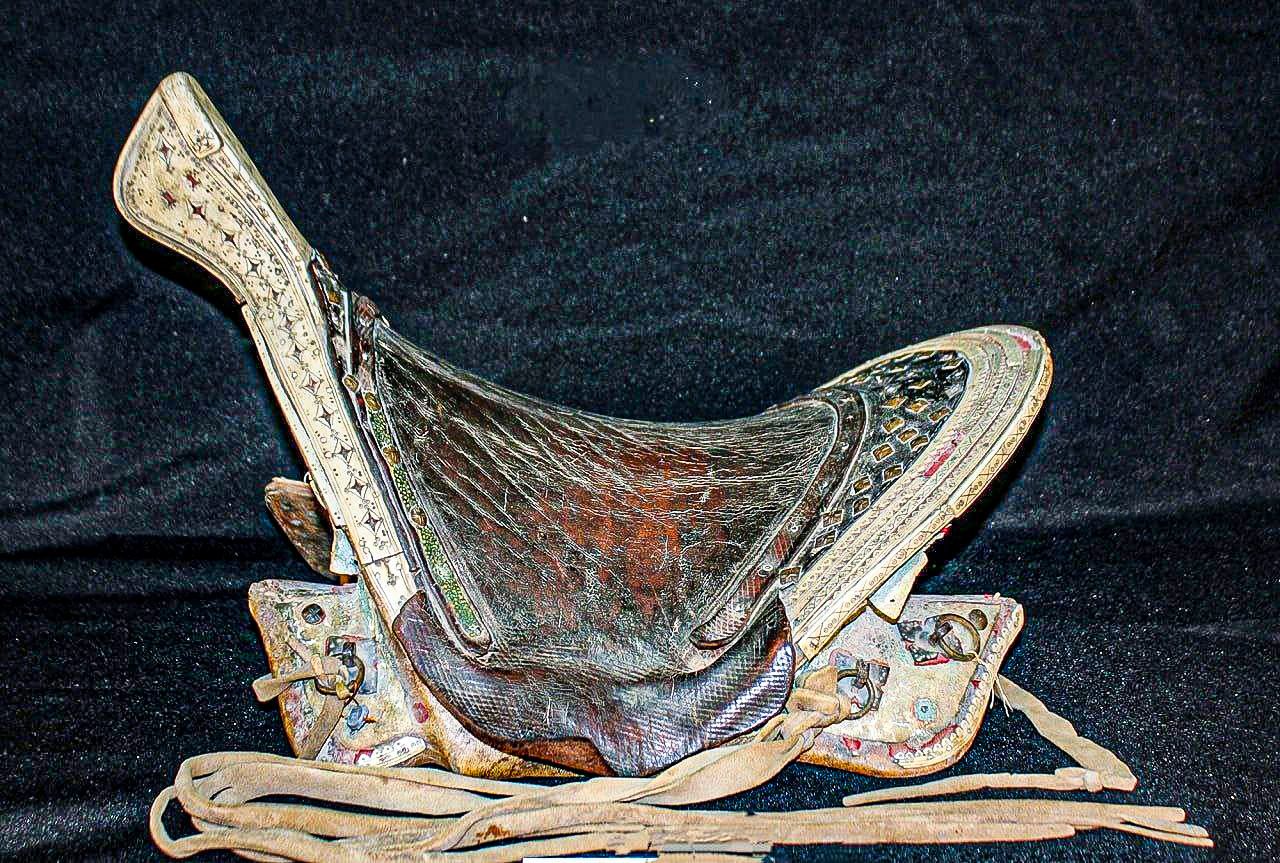 Of particular interest are the carpet products used to adorn Karakalpak yurts, featuring patterned strips created using a unique technique of relief pile weaving. The collection also includes a rich assortment of ancient Karakalpak silver jewelry with inserts of carnelian and turquoise. National costumes, embroidered with silk by unnamed folk artisans, are also part of this impressive collection.
Of particular interest are the carpet products used to adorn Karakalpak yurts, featuring patterned strips created using a unique technique of relief pile weaving. The collection also includes a rich assortment of ancient Karakalpak silver jewelry with inserts of carnelian and turquoise. National costumes, embroidered with silk by unnamed folk artisans, are also part of this impressive collection.

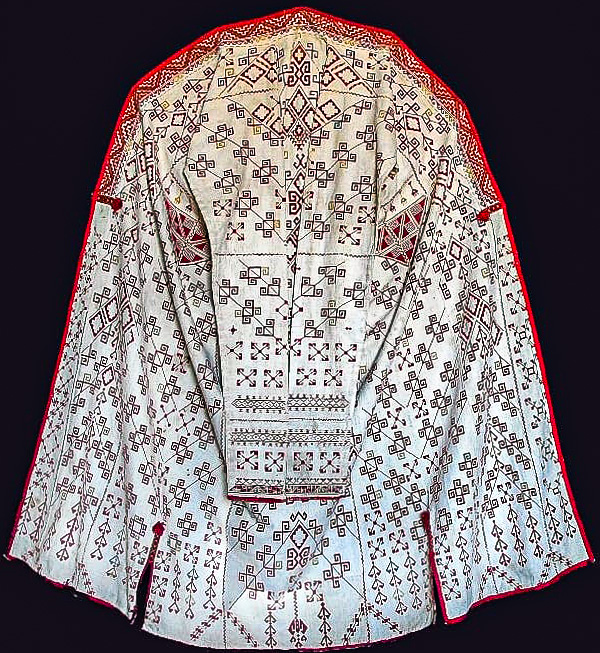 The museum in Nukus gained worldwide fame for its collection of Russian avant-garde painting from the 1920s to the 1940s. Many artists whose works are displayed in the museum (such as Robert Falk, Kliment Red'ko, Lyubov Popova, and sculptor Vera Mukhina) were well-known in Europe. The museum's exhibition features genuine masterpieces from the artist A. Volkov and the exquisite stylist Usto Mumin (A. Nikolaev), as well as works by renowned Impressionist artists who lived in Uzbekistan, along with early pieces by U. Tansykbaev and N. Karakhan. The collection also includes magnificent canvases by V. Rozhdestvensky, E. Korovay, M. Kurzin, and A. Shevchenko, which resonate with the spirit and style of the avant-garde. Additionally, the museum introduces viewers to the works of contemporary artists from Karakalpakstan, including Zh. Izentaev, B. Serikeev, R. Matevosyan, and Zh. Kuttymuradov.
The museum in Nukus gained worldwide fame for its collection of Russian avant-garde painting from the 1920s to the 1940s. Many artists whose works are displayed in the museum (such as Robert Falk, Kliment Red'ko, Lyubov Popova, and sculptor Vera Mukhina) were well-known in Europe. The museum's exhibition features genuine masterpieces from the artist A. Volkov and the exquisite stylist Usto Mumin (A. Nikolaev), as well as works by renowned Impressionist artists who lived in Uzbekistan, along with early pieces by U. Tansykbaev and N. Karakhan. The collection also includes magnificent canvases by V. Rozhdestvensky, E. Korovay, M. Kurzin, and A. Shevchenko, which resonate with the spirit and style of the avant-garde. Additionally, the museum introduces viewers to the works of contemporary artists from Karakalpakstan, including Zh. Izentaev, B. Serikeev, R. Matevosyan, and Zh. Kuttymuradov.
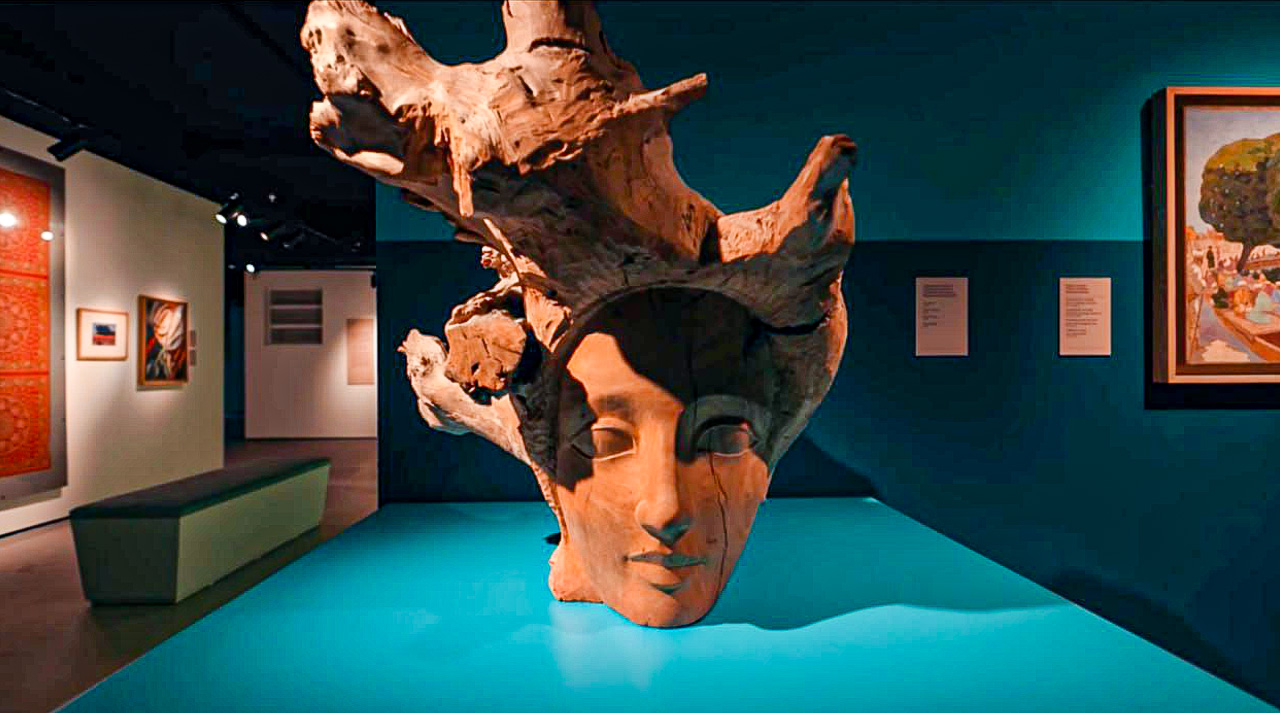 On October 4, 2024, the Karakalpak State Museum of Arts named after I.V. Savitsky hosted the presentation of a large-scale exhibition project titled "Uzbekistan: Avant-Garde in the Desert", which had previously been exhibited in Italy. The exhibition brought together over 150 works of painting and graphics from the first half of the 20th century, as well as items of decorative and applied arts spanning from the late 19th century to the 1950s.
On October 4, 2024, the Karakalpak State Museum of Arts named after I.V. Savitsky hosted the presentation of a large-scale exhibition project titled "Uzbekistan: Avant-Garde in the Desert", which had previously been exhibited in Italy. The exhibition brought together over 150 works of painting and graphics from the first half of the 20th century, as well as items of decorative and applied arts spanning from the late 19th century to the 1950s.
 All the exhibits were provided from the collections of two leading state museums of the country: the Nukus Museum of Arts named after I.V. Savitsky and the Museum of Arts of Tashkent.
All the exhibits were provided from the collections of two leading state museums of the country: the Nukus Museum of Arts named after I.V. Savitsky and the Museum of Arts of Tashkent.
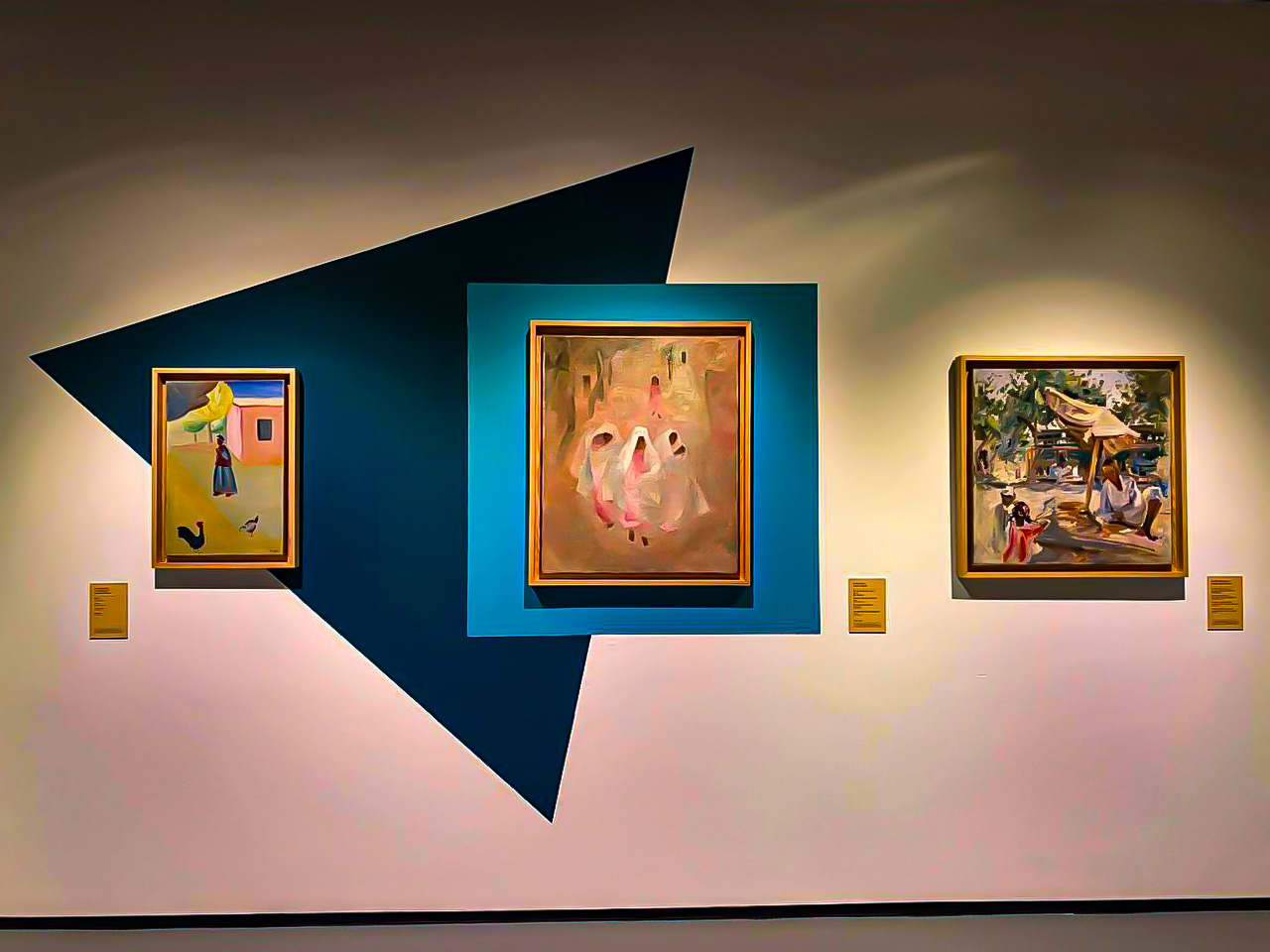
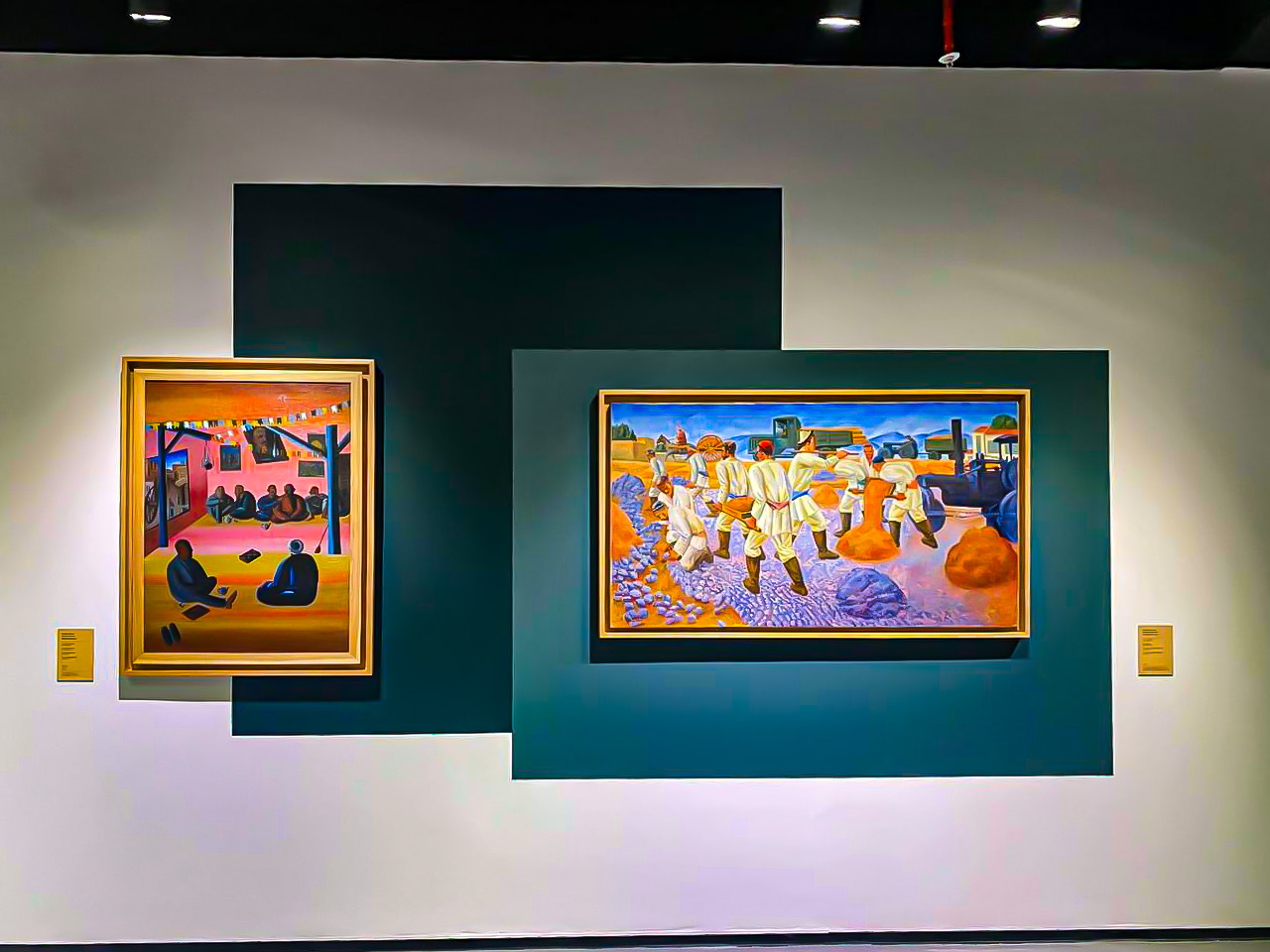 This unique exhibition invites visitors on an exciting journey into the world of Russian and Turkestan avant-garde. Among the exhibition's artifacts are masterpieces by renowned artists who shaped the main artistic movements of Central Asia in the first half of the 20th century.
This unique exhibition invites visitors on an exciting journey into the world of Russian and Turkestan avant-garde. Among the exhibition's artifacts are masterpieces by renowned artists who shaped the main artistic movements of Central Asia in the first half of the 20th century.
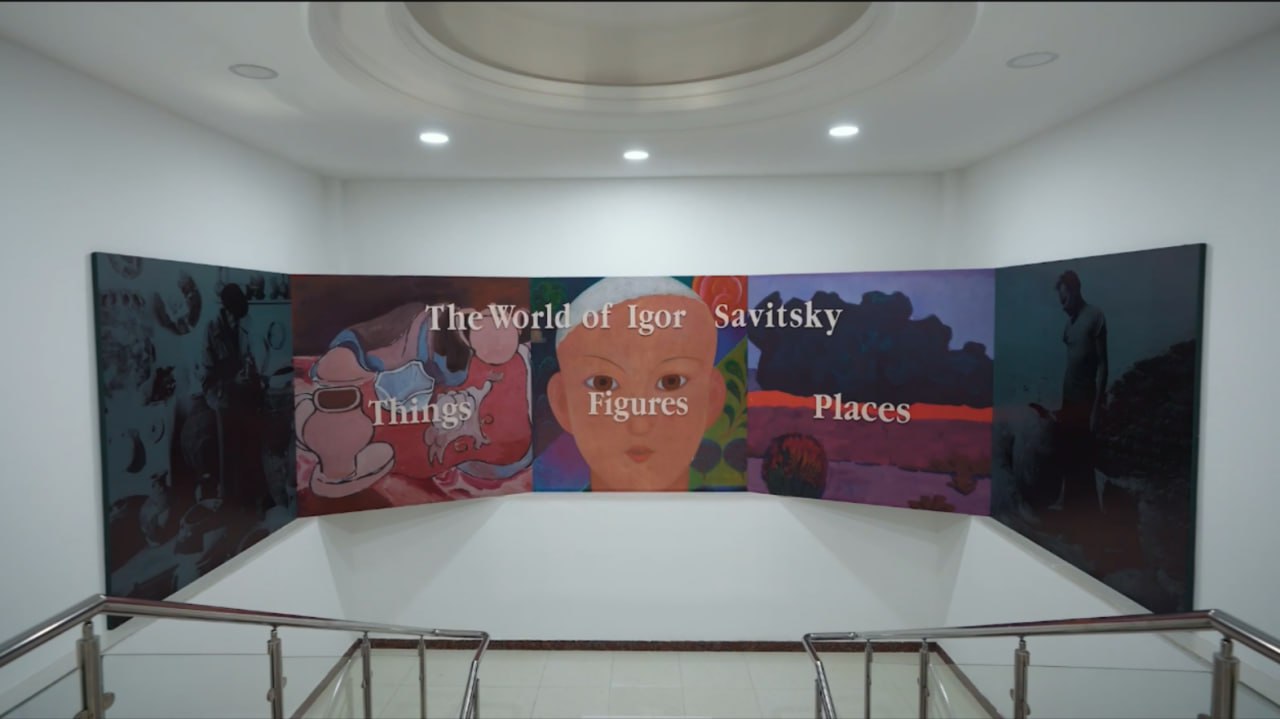 On April 6, 2025, as part of the Aral Cultural Summit, the ceremonial opening of the updated exhibition on the 3rd floor of the 2nd exhibition block of the State Museum of Arts of the Republic of Karakalpakstan named after I.V. Savitsky took place. The project "The World of Igor Savitsky" marks an important milestone in the reevaluation of the museum's exhibition. The revamped space brings together painting, archaeology, and decorative applied arts, highlighting Savitsky's unprecedented contribution to the preservation of the cultural heritage of the Aral Sea region.
On April 6, 2025, as part of the Aral Cultural Summit, the ceremonial opening of the updated exhibition on the 3rd floor of the 2nd exhibition block of the State Museum of Arts of the Republic of Karakalpakstan named after I.V. Savitsky took place. The project "The World of Igor Savitsky" marks an important milestone in the reevaluation of the museum's exhibition. The revamped space brings together painting, archaeology, and decorative applied arts, highlighting Savitsky's unprecedented contribution to the preservation of the cultural heritage of the Aral Sea region.
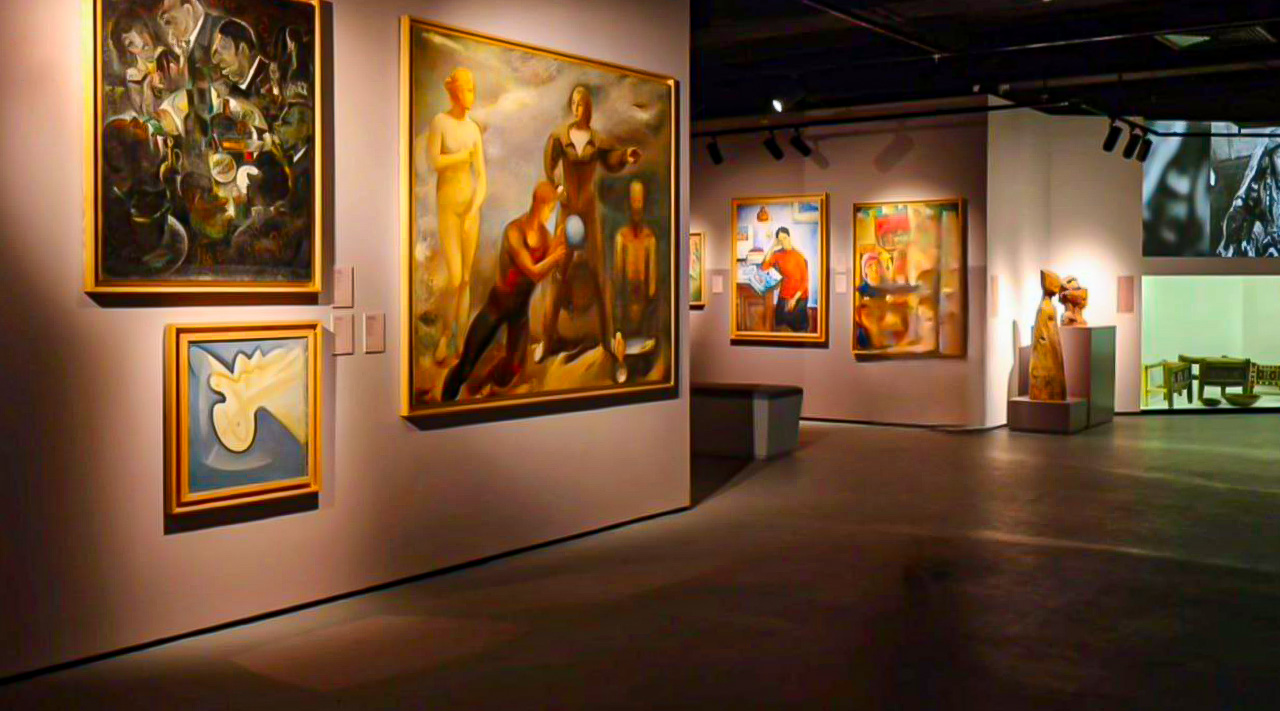
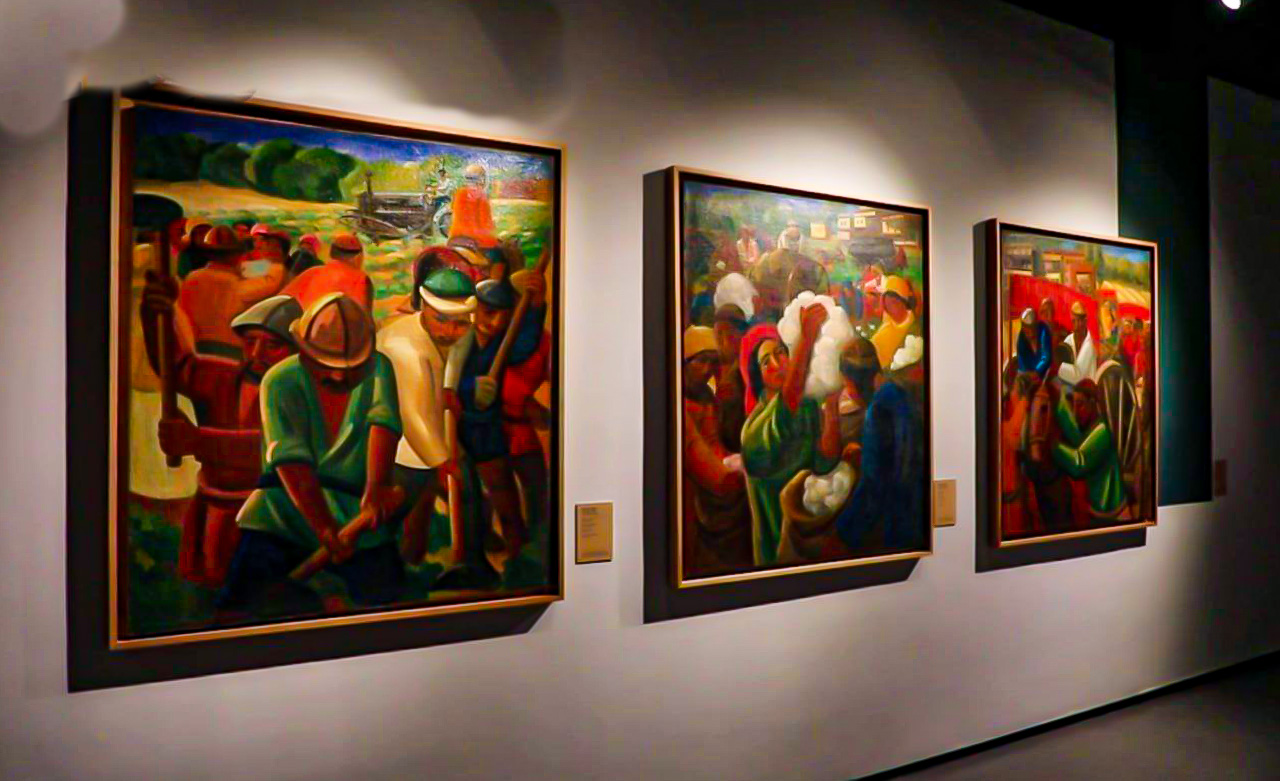
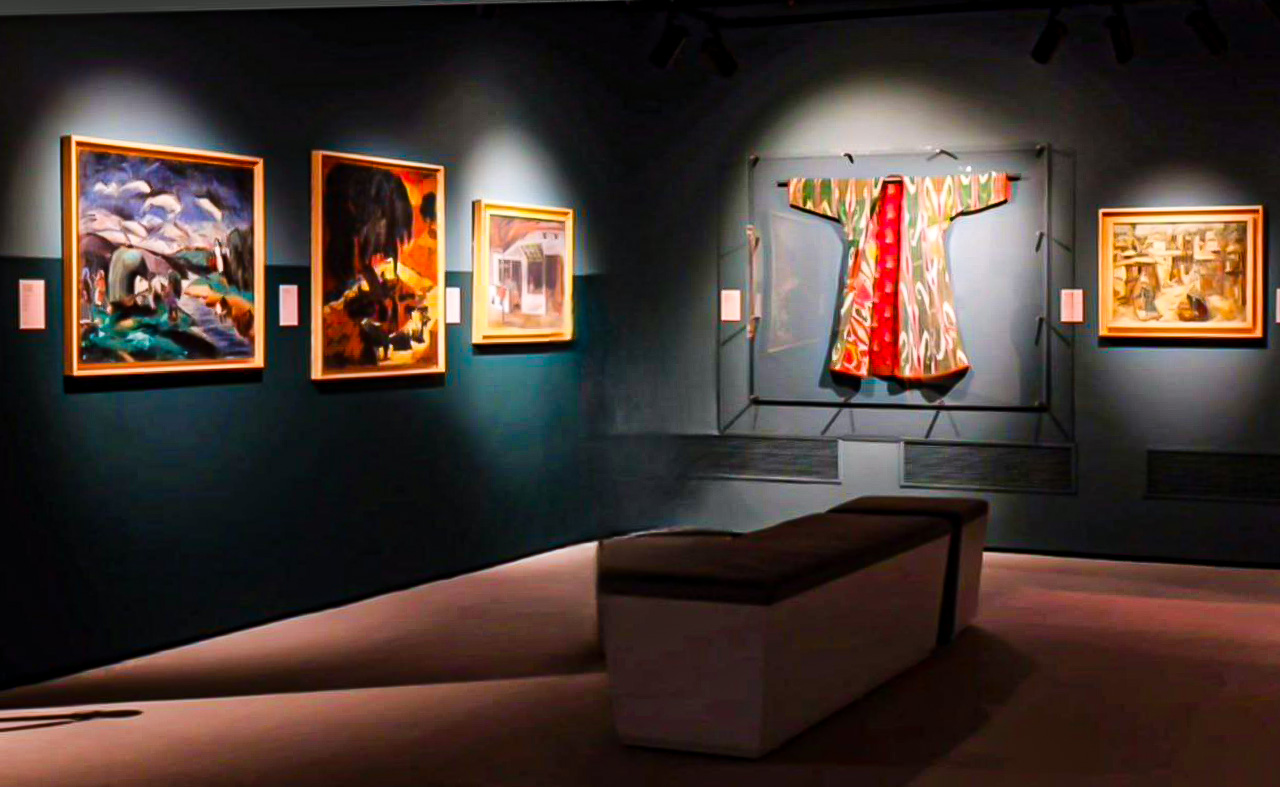 The large-scale exhibition projects were initiated by the Fund for the Development of Culture and Art of Uzbekistan.
The large-scale exhibition projects were initiated by the Fund for the Development of Culture and Art of Uzbekistan.
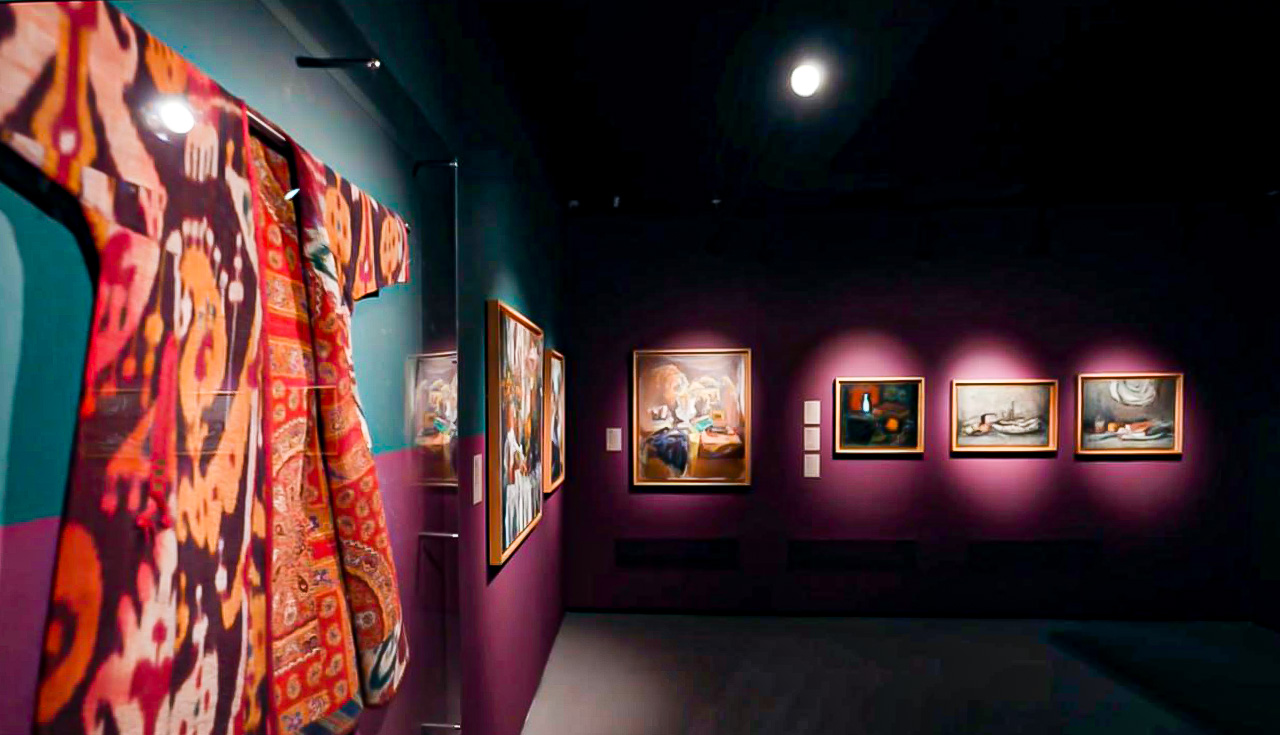
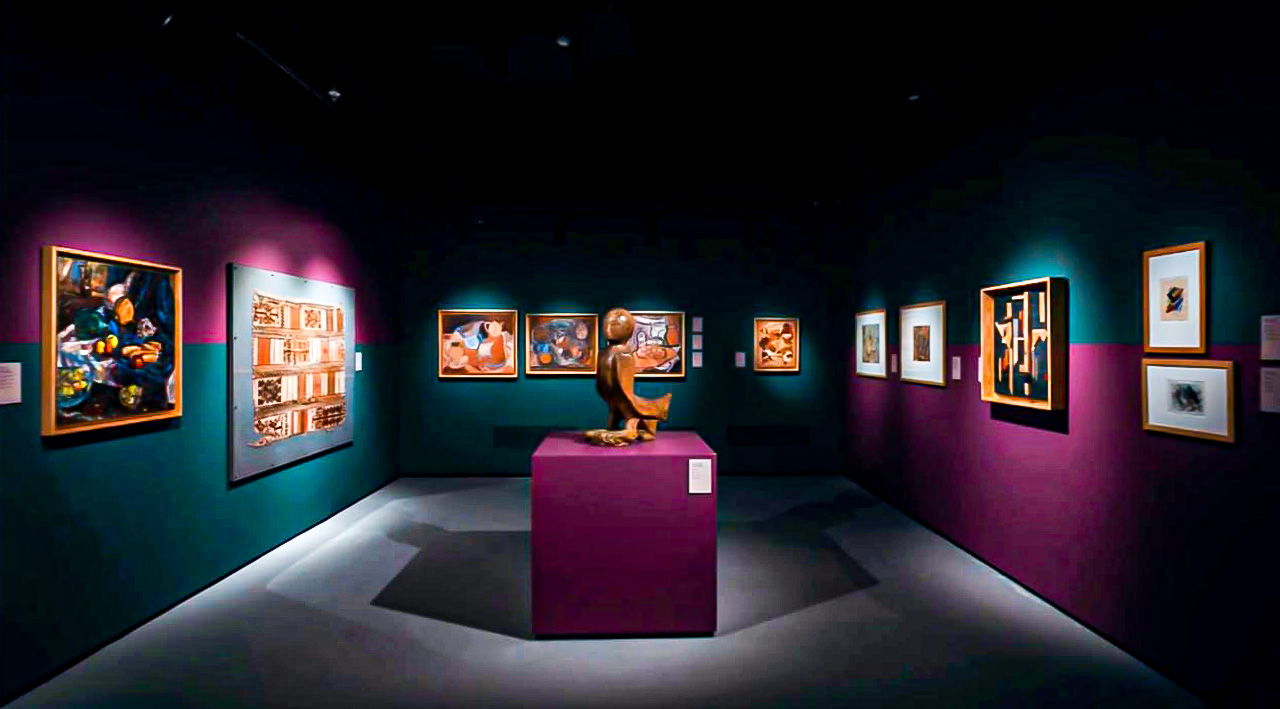 Thanks to the attention of leading media outlets in European countries, the USA, Australia, as well as international exhibitions showcasing the phenomenon of the Nukus Museum of Arts, the museum is now known worldwide. Works from the collection of the State Museum of Arts of the Republic of Karakalpakstan have been exhibited in Germany, France, Italy, Spain, the USA, Russia, Australia, the Netherlands, Qatar, and Azerbaijan.
Thanks to the attention of leading media outlets in European countries, the USA, Australia, as well as international exhibitions showcasing the phenomenon of the Nukus Museum of Arts, the museum is now known worldwide. Works from the collection of the State Museum of Arts of the Republic of Karakalpakstan have been exhibited in Germany, France, Italy, Spain, the USA, Russia, Australia, the Netherlands, Qatar, and Azerbaijan.
The museum's gift shop features a diverse range of souvenir products created by talented local artisans. Each item reflects the unique atmosphere of Karakalpak cultural heritage, allowing visitors to take a piece of this extraordinary region home with them.